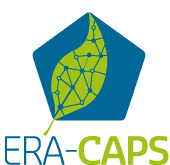Functional characterisation and validation of nonhost components in Triticeae species for durable resistance against fungal diseases
- Acronym DURESTrit
- Duration 36
-
Project leader
Patrick Schweizer (Project leader until 03/2018), DE Leibniz Institute of Plant Genetics and Crop Plant Research funded by DFG
-
Other project participants
Lesley Boyd UK National Institute of Agricultural Botany funded by BBSRC
Jochen Kumlehn DE Leibniz Institute of Plant Genetics and Crop Plant Research funded by DFG
Rients Niks NL Wageningen University funded by NWO
Ralph Panstruga (Project leader since 05/2018), DE Rheinisch-Westfälische Technische Hochschule funded by DFG
Brigitte Ruge-Wehling DE Julius-Kühn Institute funded by DFG
Ulrich Schaffrath DE Rheinisch-Westfälische Technische Hochschule funded by DFG
Pietro Spanu UK Imperial College London funded by BBSRC
Nils Stein DE Leibniz Institute of Plant Genetics and Crop Plant Research funded by DFG
Emma Wallington UK National I of Agricultural Botany, Cambridge funded by BBSRC
Roger Wise US USDA-ARS Iowa State University (ISU) Ames funded by NSF
- Funding
- Total Granted budget 2.213.100 €
Abstract
Nonhost resistance (NHR) is the most durable and broadly acting form of resistance plants posses to ward off the majority of pathogens regularly occurring within the environment within which they live. In order to exploit NHR in future crop protection concepts we need to understand why the minority of adapted host pathogens can circumvent or suppress NHR and what defense- or accommodation-related proteins, signalling pathways or structural components of their host plants are targeted in order to establish disease. A major obstacle to the rapid exploitation of NHR in crop breeding is related to the fact that NHR is operating at the species level, and only in exceptional cases corresponding sources of resistance can be crossed with related crop plants. Therefore, gene technological approaches to transfer NHR components across species barriers are an attractive alternative to traditional or molecular breeding.
In the ERA-NET consortium TritNONHOST, plus a number of related projects e.g. funded within the German GABI program (BMBF), we identified a number of genes and genetic loci in barley and wheat that are associated or correlated with NHR to three major fungal pathogens including powdery mildews. A limited set of those belonging to the group of receptor-like kinases were successfully validated in functional transient assays in barley and wheat and will provide an important source for the proposed work in the DURESTrit consortium, in addition to resistance loci derived from the wild barley species Hordeum bulbosum or from experimental barley populations segregating for NHR strength. In DURESTrit, we propose to functionally validate three promising receptor-like kinase genes plus a limited number of genes with outstanding regulation behaviour in host- versus nonhost interactions by generating and characterizing stable transgenic lines in barley and wheat. We also propose to fine map and isolate NHR genes from H. bulbosum introgressions and from segregating barely populations. All these materials will either carry transgenes or genome fragments from NHR donors, or have potentially important resistance components silenced by RNAi or genetically modified using TALEN technology. Candidate genes of barley will be tested for molecular interactions with secreted effector molecules of the barley powdery mildew, and this part of the project will be linked to a planned investigation of effector function during barley-powdery mildew interactions funded by NSF.
The project will result in the deeper characterization and validation of previously identified strong NHR candidates, with a special emphasis on receptor-like kinases, and in the identification of new NHR components introduced into barley or wheat by wide crosses or genetic engineering. This will deepen our understanding of NHR in cereals and provide materials and know-how for the exploitation of NHR by translational research.
